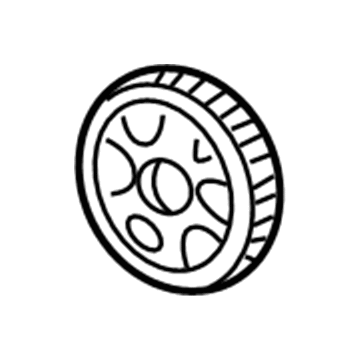The timing system has a lot of approaches, and it quickly deteriorates if a mistake is made with it when dealing with the engine. This is a procedure that should only be handled by senior personnel/technicians, and if there is any doubt about the skills, then one should seek assistance from an expert. Recheck the entire work in order to confirm that all facets are accurate, before powering up the engine. Start with disconnecting the usual end of the cable from the terminal of the battery and placing a number one piston at TDC on the stroke of the compression,gently having camshaft marks with valve covers and dowels on the sprockets properly arranged upwards. Pull the drivebelts and the alternator together with the valve cover, crankshaft pulley, the water pump pulley, and timing belt over. Ensure the position of the engine is still at TDC for cylinder number one, applying a mark to that portion of the timing belt, if at all it is reusable. The timing belt tensioner and timing belt should be pulled out and the pulley flange should be marked for installation later. If required, take off the camshaft sprockets by means of the bolts with the camshaft removed. Remove the left balance shaft plug by unscrewing it and, subsequently, locking the balance shaft by inserting a screwdriver in the hole provided for that purpose; next, deprive the oil pump of its sprocket by yielding the nut and lifting off the sprocket in question. Joint the same previous process and rotate anti clock wise to loosen the right balance shaft sprocket bolt after removing the plug of the right side of block. Detach the tensioner and inner timing belt and it is necessary to note the situation of the pulley flange. Check all given parts for the signs of wear and mechanical damage and replace the needed components. For installation the first step is the inner crankshaft pulley that has got to sit with the flange in the right way. Place the spacer to the right balance shaft with a face full of oil, the chamfered end toward the engine. As such, ensure the timing slots and marks on the front of the engine line up with the ones on the crankshaft sprockets. Put the inner tensioner in and align the pulley with the engine, and align the timing marks as well. Screw the tensioner further but ensure that you do not rotate the shaft, ensure all teeth are in line. Insert the inner crankshaft and press it to watch the upper right side of the timing belt move to fit the holes, and screw the outer crankshaft sprocket and flange with the sprocket bolt. Check to see that the screwdriver is still securing the balance shaft in place and then bolt in the oil pump sprocket and tighten the nut. If removed, fit the camshaft sprockets and further tighten the bolt(s). While compressing the tensioner, rotate the tensioner body anti-clockwise till it is completely collapsed; then, secure it with a wire before tightening. Ensure that the dowels are positioned up and the markings on the camshaft pulley go with those on the valve cover, then slot the timing belt over the pulleys as laid down. Ensure all timing marks on sprockets are lined and check the depth of the screwdriver to establish the position of the oil pump/balance shaft. Pull on the wire out from the screwdriver accordingly, replace the plug, and take off the wire from the tensioner as well. It is recommended to turn the engine by hands two times to feel the stiffness, this will show a problem that, needs a fix, before continuing. After the altering and assembling of the products, the rest of the procedure is just the reverse of that of disassembly.
Posted by KiaPartsNow Specialist 









